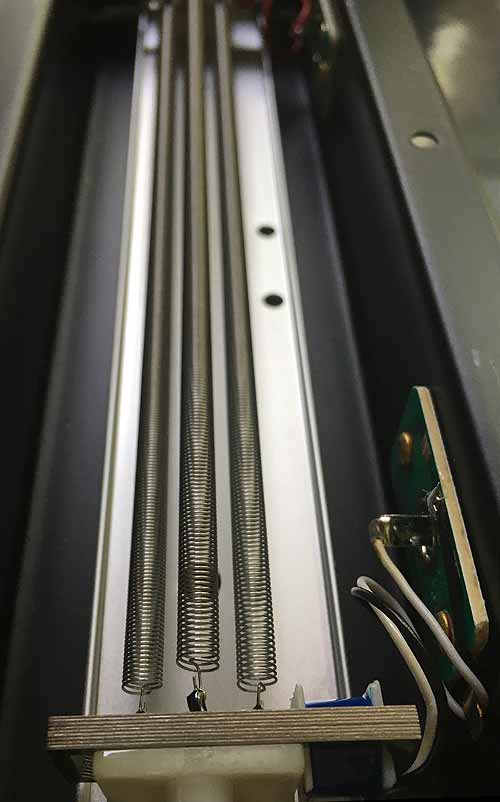I bought a Fender Blues Jr about three years ago. And once the initial romance was over, I noticed something a little odd about it. Whenever I played an A (any octave, any position), with either of my guitars, the amp would add a little mosquito-like buzzing while the note decayed. It was definitely frequency-related, since it only happened on A's, and also the buzzing was kindof in-tune with the note.
So I replaced the tubes and I thought that fixed it. But eventually I started hearing it again. Then I took the back panel off and poked and tapped on various things to see if I could reproduce it. Never could. Tried both of those things multiple times over these past three years. I've listened to every YouTube clip of people with microphonic tubes, busted speaker coils, bad capacitors, cabinet rattles, cracked solder joints, etc.. None of them were the same sound I was hearing.
Wednesday, I had had enough. After weeks of drooling over amps on the internet, I had decided to sell the BJr and my black Stratocaster and get a new Princeton Reverb in gorgeous "Bordeaux Reserve" finish - ooh la la. The old stuff was in my car, I was on the road, 40 minutes to the store. Then I started thinking about the process of trying a new amp and selling my old stuff, and COVID and masks and touching guitars and, nope. I wasn't going to take that risk. I turned around and went home.
When I got home I plugged the amp in the garage, unscrewed the back panel, turned it up loud and started looking at it again. Then I discovered the problem. It was the reverb tank. That's a little box bolted to the bottom of the amp cabinet. It's responsible for making it sound like you're playing in a big room. It has a set of long steel springs inside - on one side of the springs, a slightly-amplified copy of the signal from your guitar sets the springs vibrating. On the other side, a magnetic sensor listens to the moving springs; vibrating springs just happens to sound like the echo of a big room. That signal gets mixed back in with the clean signal and that gets amplified some more and sent to the speaker.

iPhone
Even with the reverb level at zero on the amp's controls the buzzing still happened. So I never thought it could be related to the reverb. But when I unplugged the reverb tank (physically taking it out of the circuit) the buzz went away.
$30 to get a new reverb tank on Amazon. Hopefully that's all it takes!
Update:
Yep. That was all it took. The replacement reverb appears to be identical to the stock Fender tank, inside and out in every way, except for the brand's sticker on the new one (says "MOD"). So, it probably is from the same factory. But, it works.
Took my three years to figure this one out. So hopefully this post will help someone else in the future.

Amp detective! Good job.
I had a similar problem that caused me to take apart my 67 Bandmaster. It sure is pretty on the inside! But it was a bad preamp tube all along. I was just glad to be rid of the ringing rattle.